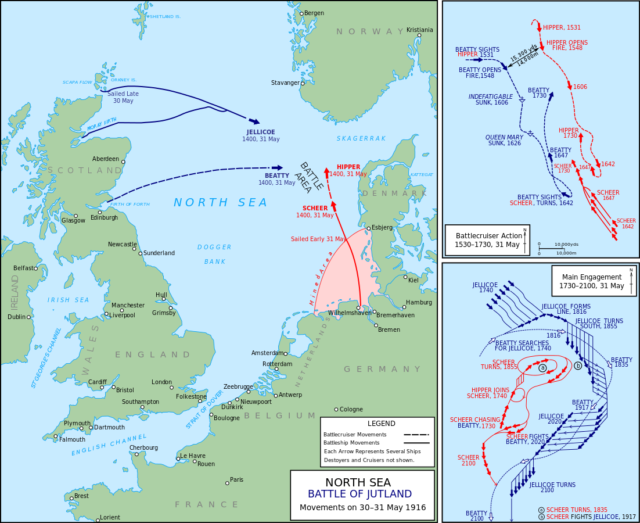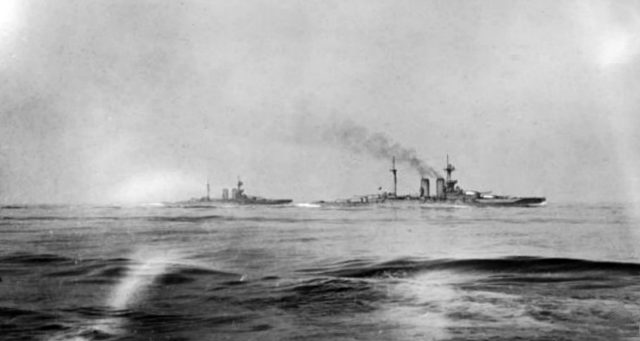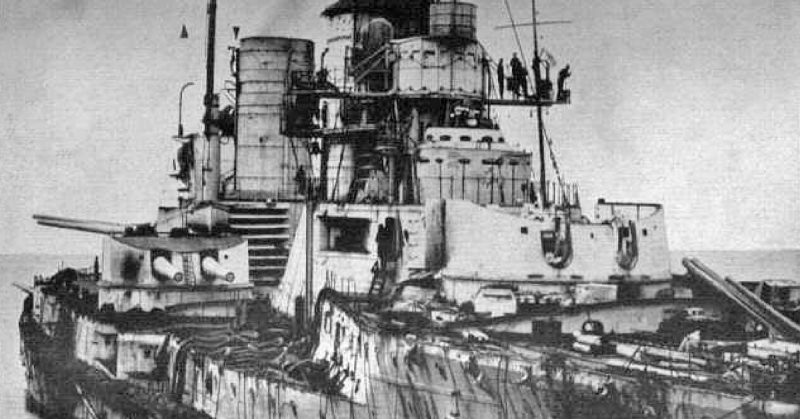Lasting roughly 36 hours on May 31st 1916, the Battle of Jutland changed the course of the First World War. It was the only major sea battle in the war, and the sheer number of vessels involved made it one of the biggest naval battles ever fought. The British Grand Fleet and German High Seas Fleet, the two most powerful naval forces at the time, met in combat off the coast of Denmark’s Jutland Peninsula.
In the Orkney islands off the North coast of Scotland, members of the British, Scottish and German governments, along with the British Princess Ann, joined relatives of those who fought in the battle. The commemoration was held in the impressive St. Magnus Cathedral in Kirkwall on Tuesday.
The Battle of Jutland was the largest naval engagement of World War I. Nearly 10,000 lives were lost, and a vast amount of shipping was sunk. The battle greatly decreased the German naval fleet’s ability to conduct maritime operations.

It is also considered to be the only large-scale maritime conflict in the First World War. The British Navy lost three times as many men as the Germans in the battle. Though they also lost many ships, they managed to remain a powerful naval force. However, the German Navy was was crippled, and could not continue effectively waging war on the open seas for the remainder of the war. At the onset of the war, the British Navy fought two smaller maritime battles, Heligoland and Dogger Bank, and was widely considered to be the best navy of the time.
In 1916, the United Kingdom enforced a naval blockade of the small German northern coastline. They easily enforced their blockade because the German coast covered a relatively small stretch of land. Admiral Reinhardt von Scheer, the German High Seas Fleet commander, realized the blockade had persisted long enough and severely impacted the German empire. The UK based ships out of Rosyth, Cromarty, and Scapa Flow in Orkney in the North Sea managed to prohibit the German High Seas Fleet from accessing the Atlantic and attacking British merchant ships.
Most of the British Navy, however, was based in Portsmouth and Plymouth. Admiral Scheer ordered part of his Navy to attack the coastal towns of Lowestoft and Yarmouth on April 24th and 25th in order to lure British ships from their naval bases. Subsequently, he ordered Admiral von Hipper to move 40 ships down the Danish coast in May. A code breaking team in London, “Room 40”, intercepted the news of this provocation. Upon hearing the news, Admiral John Jellicoe of Rosyth sent Britain’s Grand Fleet to meet the German force at sea, resulting in the Battle of Jutland on May 31st.

The British struggled to find the German fleet, but Vice-Admiral Sir David Beatty’s fleet eventually accomplished the task. They maneuvered to lure the German force towards Admiral Jellicoe’s Grand Fleet in order to combine forces and outnumber the German ships. The smaller German force had greater visibility due to the position of the sun, and the ships opened fire at a range of ten miles. By 4pm 1,000 UK sailors had died when a magazine hit the Indefatigable, a British battle cruiser. Roughly 20 minutes later the Queen Mary cruiser met her end and sunk in a minute and a half due to German fire. The UK situation worsened when Admiral Scheer’s High Seas Fleet reinforced Admiral Hipper’s fleet. Admiral Jellicoe’s forces were 15 miles away from Sir Beatty’s ships when the battle truly opened up.
The British Invincible sunk as the two fleets converged just after 6:30 pm that night. As the German and British ships came together, however, the British ships overwhelmed the Germans, who sailed north. Instead of following the German ships, and fearing a trap, Admiral Jellicoe instead moved south to cut off the German path back to their home port. The two forces indeed met as the Germans returned home and the Seydlitz and Derfflinger, both German ships, were badly damaged with the Lutzow, Admiral Hipper’s flagship, which was sunk by her own crew.
The German fleet claimed a Pyrrhic victory. They had sunk more ships and killed more men, but at a high cost – the German High Seas Fleet was no longer considered seaworthy. The British fleet sustained heavy losses but was able to maintain their blockade, causing extreme hardship in Germany. The blockade, United States involvement due to the German submarine campaign, and a mutiny of disillusioned German sailors in 1918 – each one of these events contributed to an allied victory in World War One.
